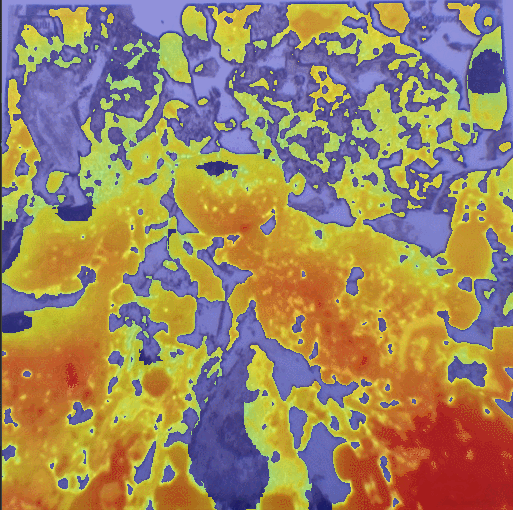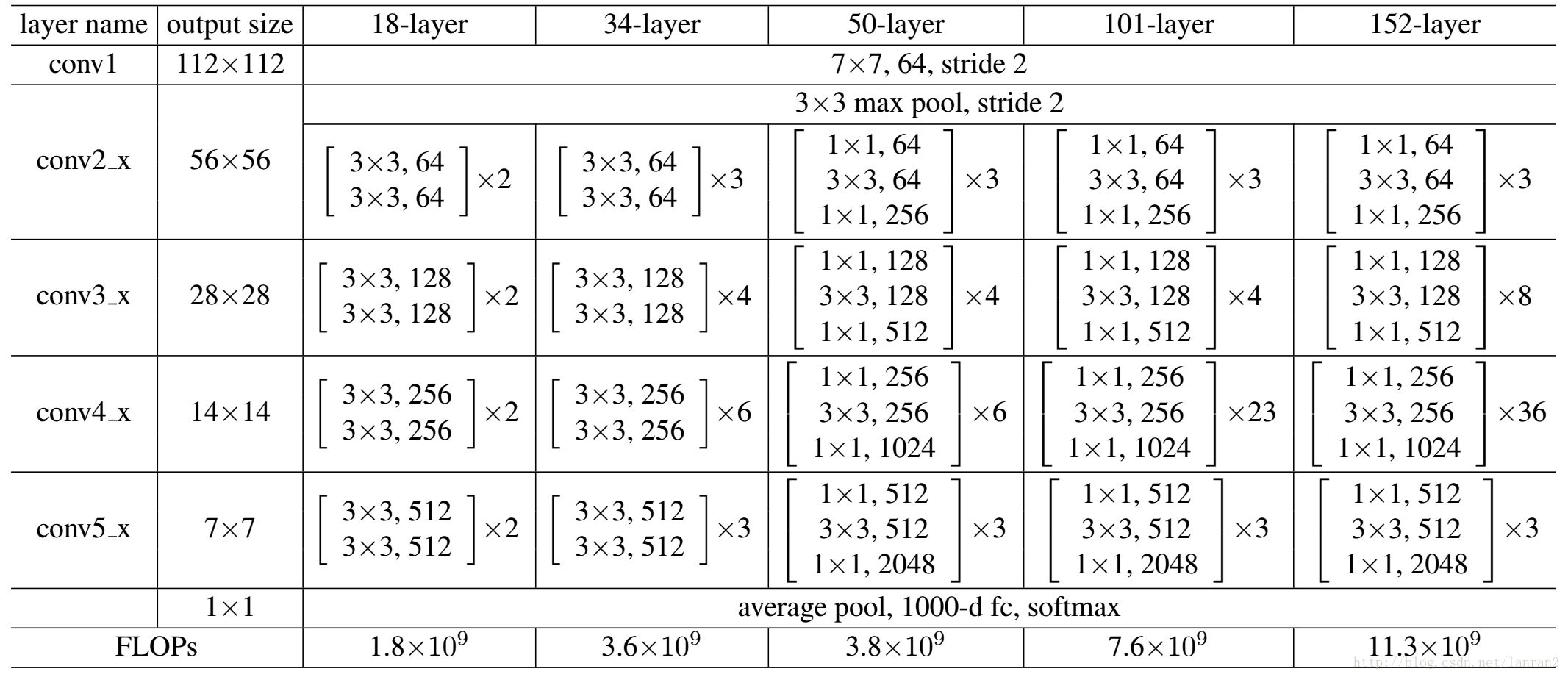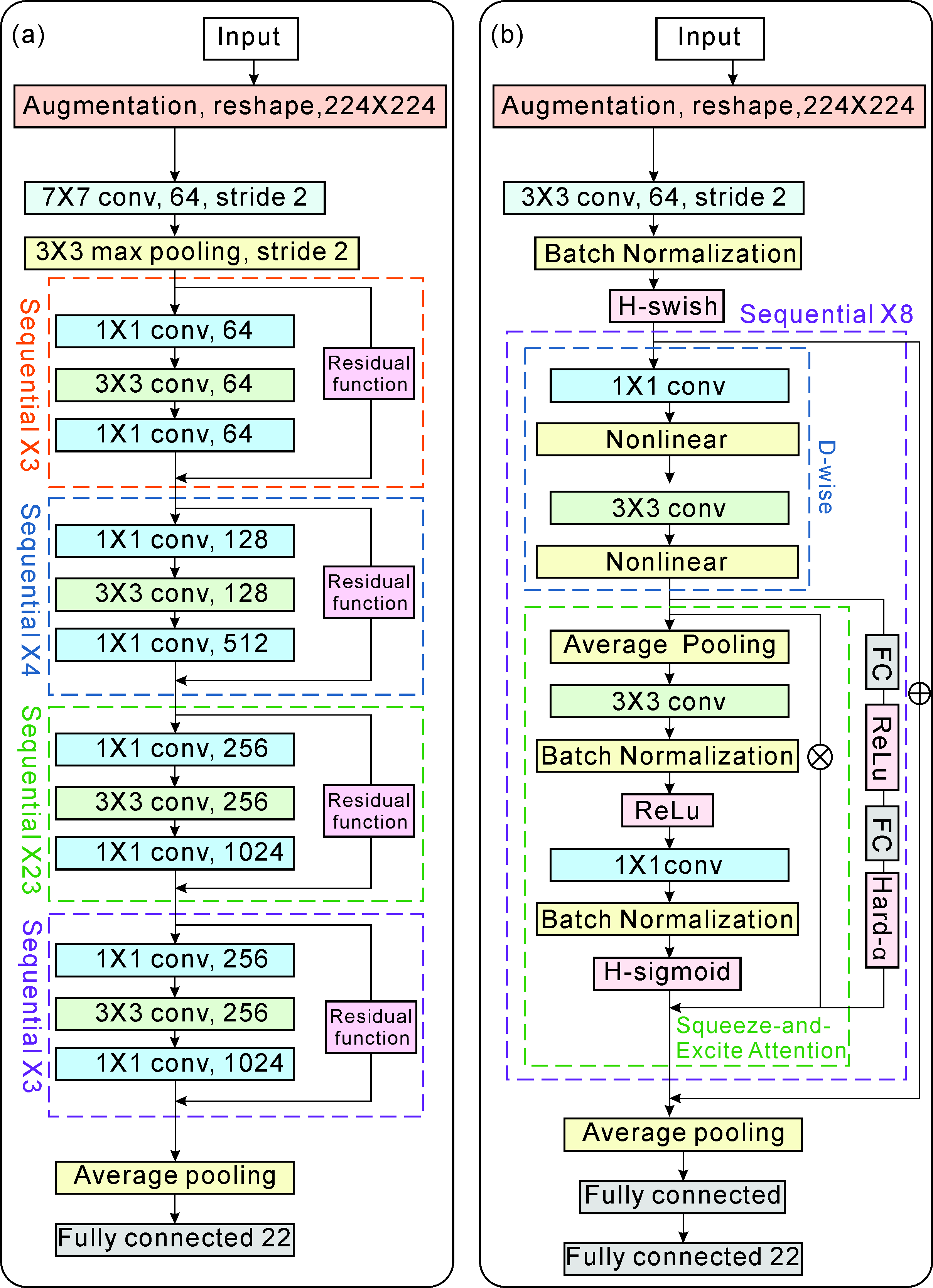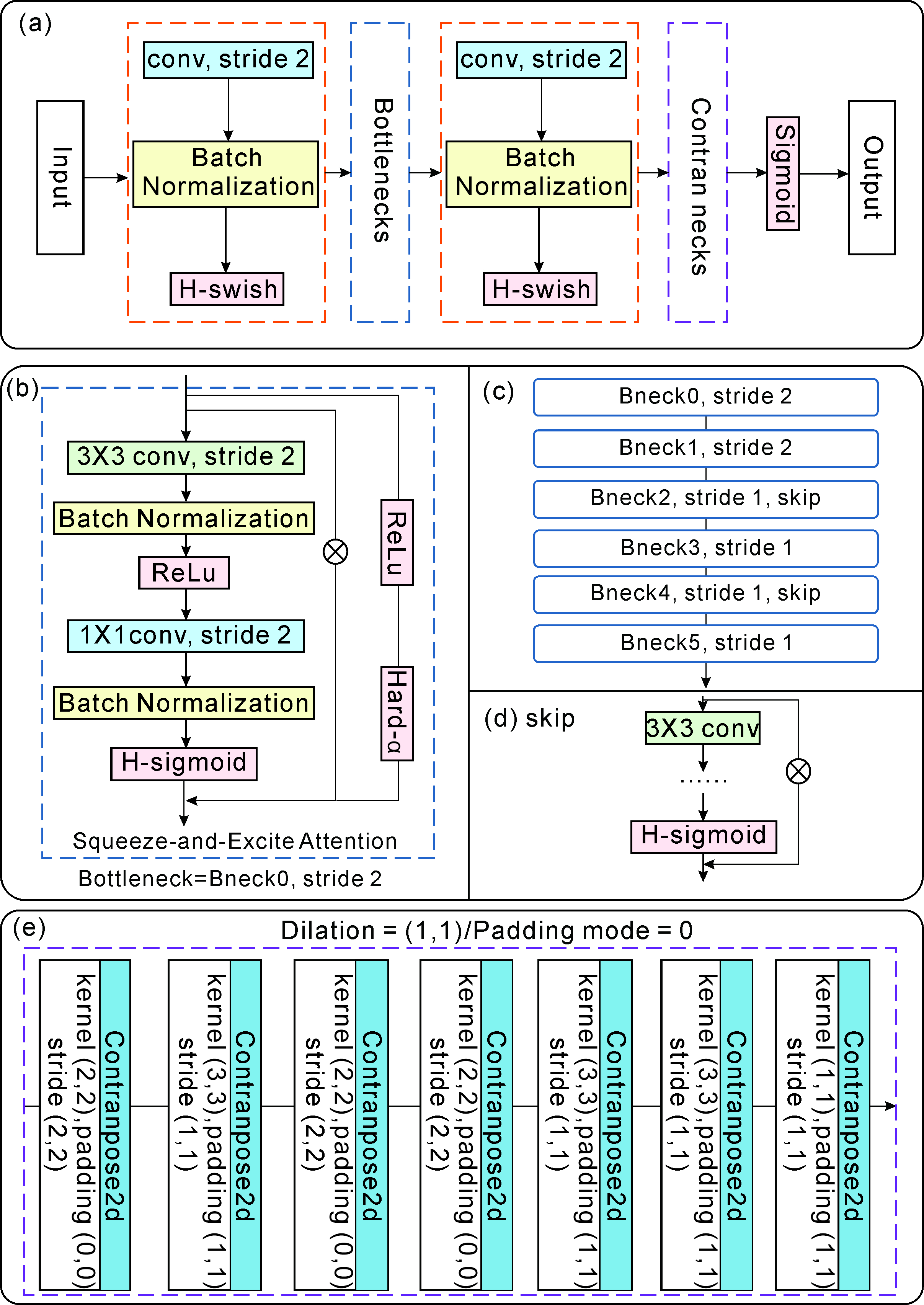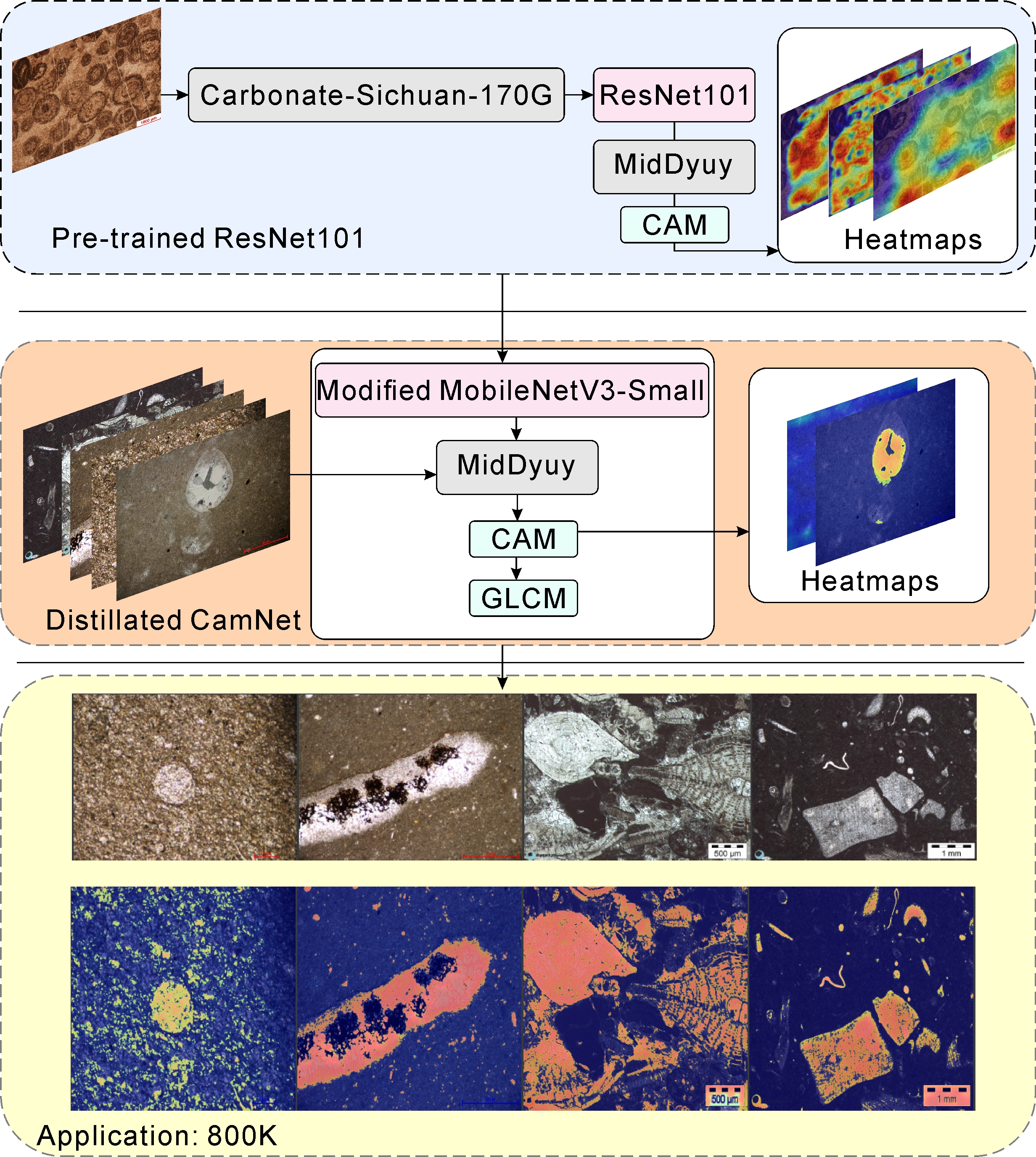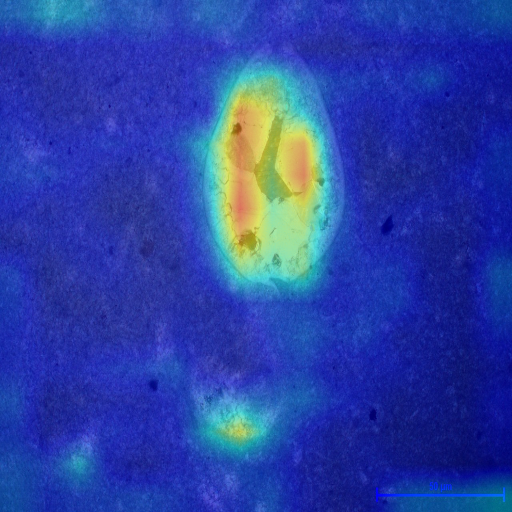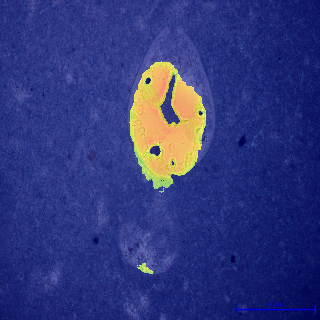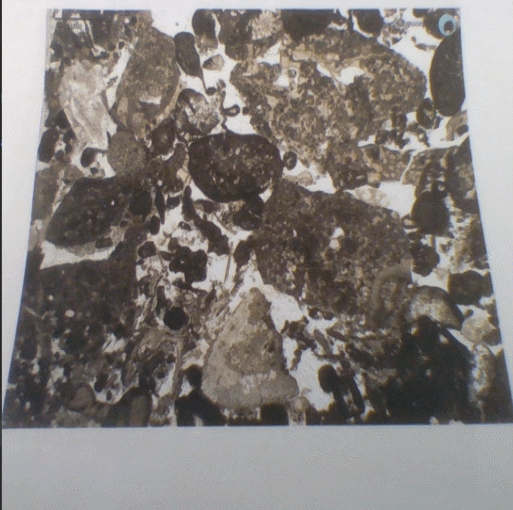GeoCamNet: An Extremely Light Carbonate Classification Model Distilled from An Extremely Deep ResNet101 Model
Fig 1. GIF performance of the model
Our main tasks so far are to train a microscopic carbonate images classification model on a extremely large image datasets (Fig. 1). The datasets include over 10K+ high-resolution optical images. The images are mainly from practical hydrocarbon exploration projects in Sichuan basin. The datasets is named as Carbonate-Sichuan-170G from the location and volume of the datasets. 22 types of carbonate frameworks are carfully divided.
After training by a ResNet101 (parameters can be seen in Table 1, net framework can be seen in Fig. 2a), the .pth file to extract the corresponding heatmaps (CAM) on a lighter datasets, from Qi Z., Hou M., Xu S., et al., A microscopic image dataset of Sinian carbonate from Dengying Formation on the northwestern margin of Upper Yangtze. Science Data Bank, 2020. (2020-07-31). DOI: 10.11922/sciencedb.j00001.00105., shorten as "MidDynuy". The pre-trained ResNet101 took a role as a Teacher Net and distilled a light Student Net in MidDynuy (Fig. 3-4). The Student Net was a less than 800k ultra-lightweight model (original framework of MobileNetV3-Small can be seen in Fig. 2b; improved framework of MobileNetV3-Small can be seen in Fig. 3a; Details of improvements are displayed in Fig.3c-d). The 800k ultra-lightweight model adapted the MobileNetV3-Small framework.
Table 1 Parameters of ResNets
Fig 2. Original Model Frameworks of (a) ResNet101 and (b) MobileNetV3-Small
Fig 3. Frameworks improved MobileNetV3-Small; (a) Total framework; (b) Illustration of one bottleneck; (c) Flow of bottlenecks; (d) Illustration of the skip; (e) Flow of contran necks
To investigating the potential deploying scenario, in addition to CAM, other image processing such as glcm enhancement was used in the final rendering.
The workflow of this research is:
Fig 4. Workflow of this research
The following shows the original image to CAM heatmap to the GLCM enhanced CAM heatmap
Here are some more examples
Here's how to works in camera
